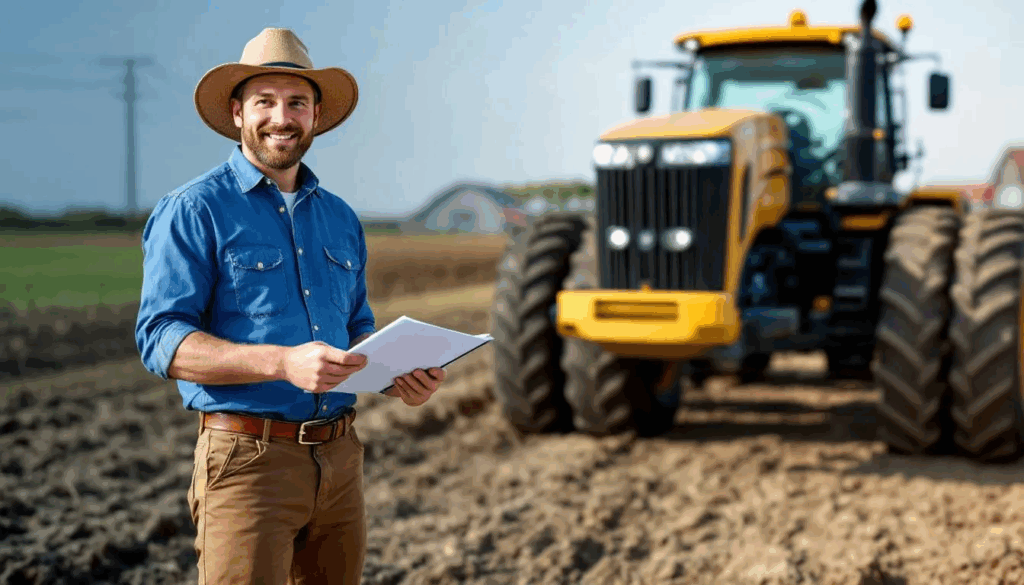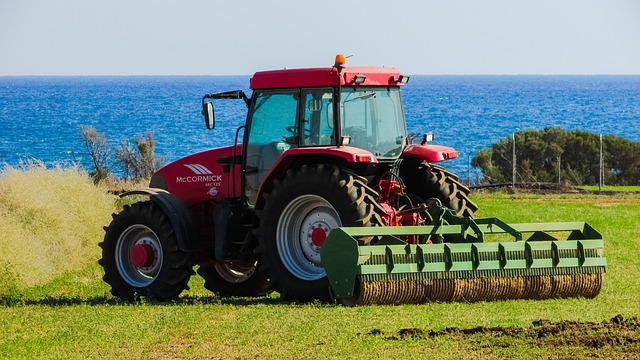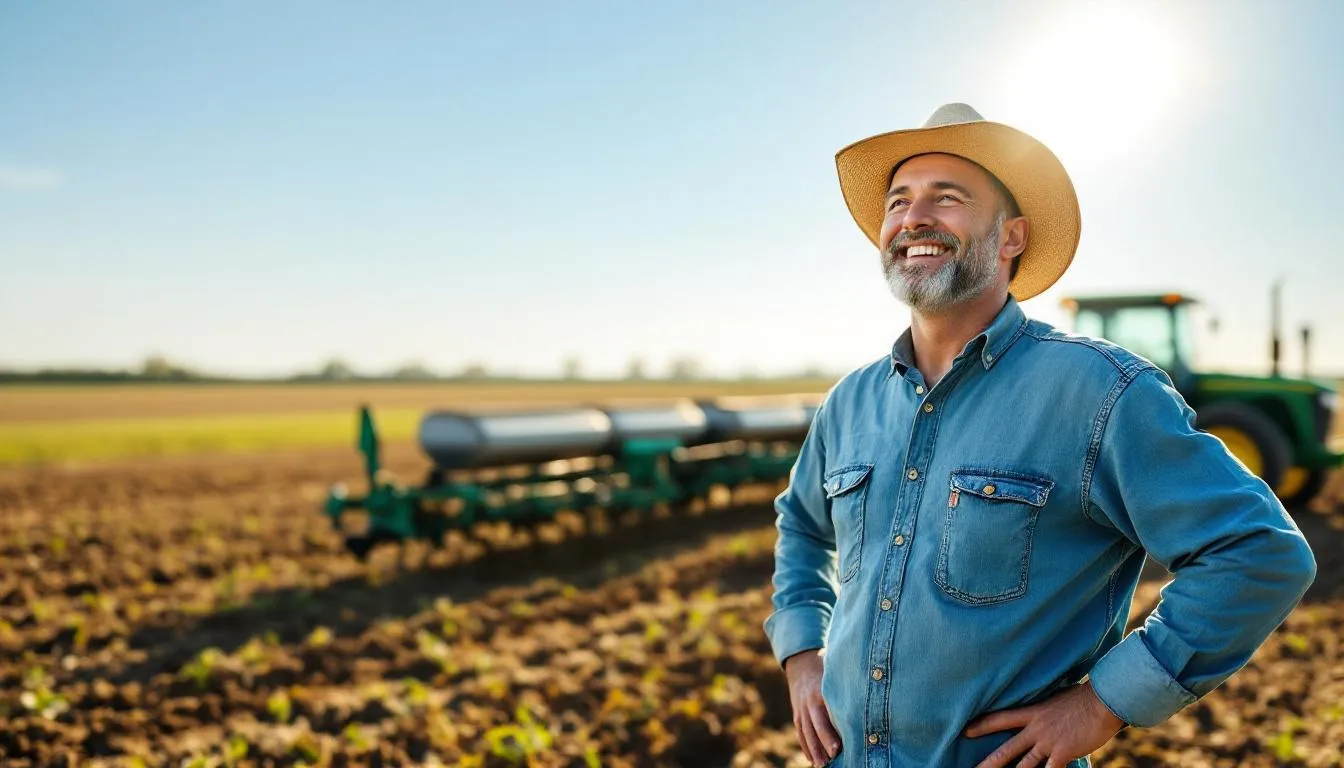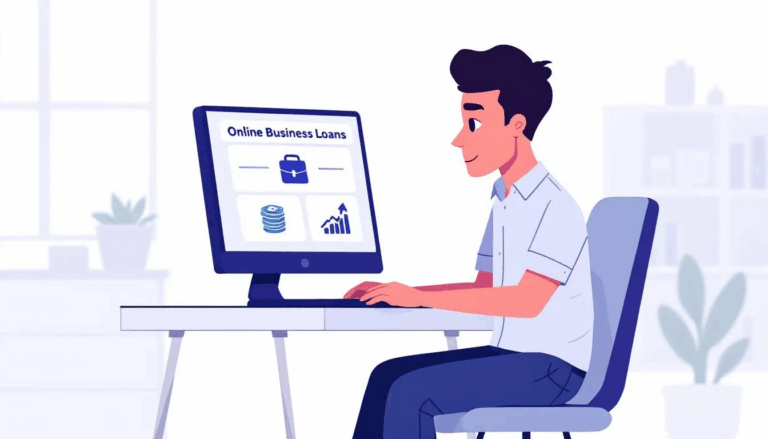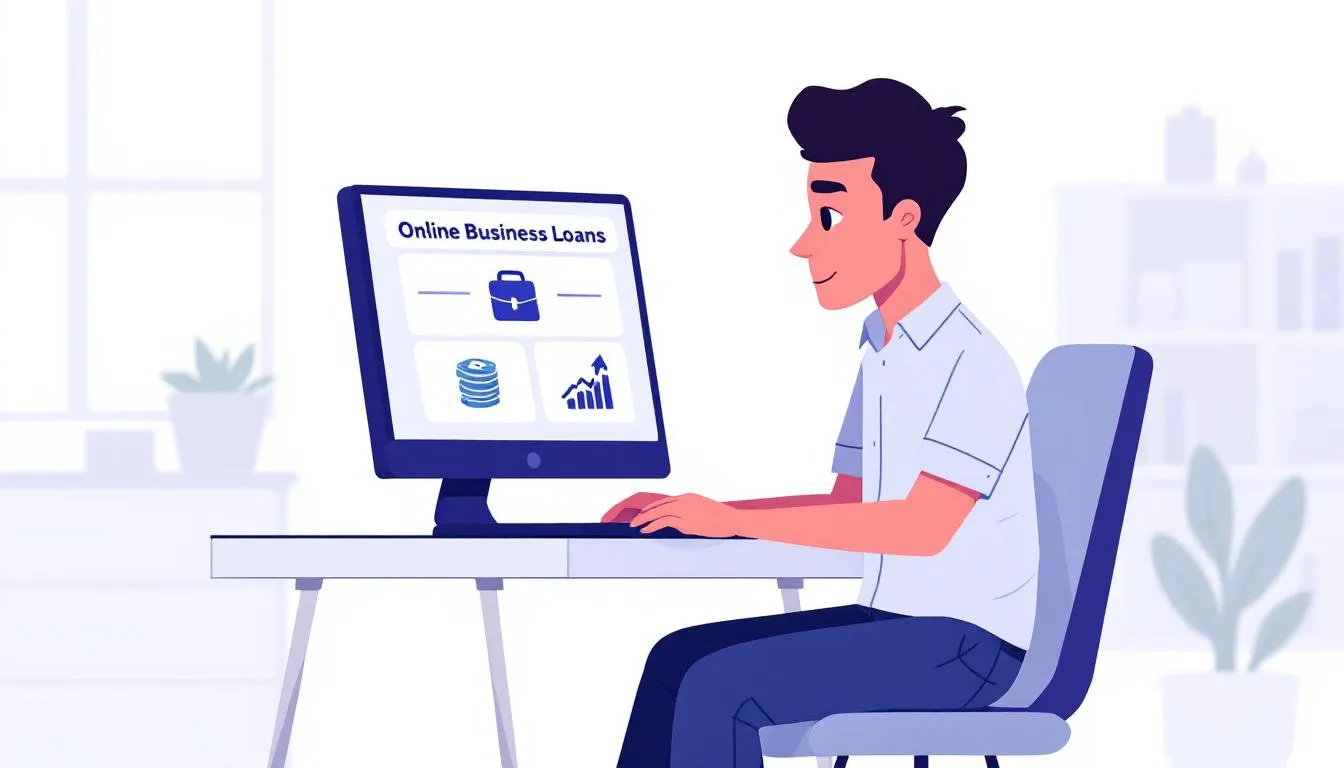What is Farm Equipment Financing?
Farm equipment financing is a fancy way of saying a loan for your ag equipment. It allows you to acquire expensive equipment, such as tractors, on credit.
Instead of paying the full amount upfront, you take out a loan to purchase the equipment. This allows your farm to start using the equipment to produce crops. You can then repay the loan financing once you start bringing in more farm revenue from the increased production.
Farm Equipment Loan
An equipment loan is a type of small business loan where the equipment serves as collateral, thereby reducing the lender’s risk. If you default, they repossess the equipment to pay off what’s owed. Since their risk is lower, lenders offer more favorable terms, including competitive interest rates and lenient loan conditions.
Equipment Loan Key Facts:
-
Up to $5 million per piece of equipment.
-
Interest rates start at 3.5%
-
Loan terms are 1-6 years.
-
You can get your money in 3-10 business days.
How does Agricultural Equipment Finance work?
Agricultural equipment financing is a straightforward process that helps farmers and agribusiness owners acquire the necessary machinery without requiring them to pay the full cost upfront. Instead of draining your working capital, you secure a loan or lease to spread the cost over time.
Equipment financing options are available with both fixed and variable rates. You can typically decide which one, depending on your business needs. Here’s a step-by-step breakdown of how the process typically works:
Step-by-Step Guide to Farm Equipment Financing
Step 1 – Determine Your Equipment Needs: Identify the specific types of farm equipment you need (e.g., tractors, balers, irrigation systems). Get an estimate of the total cost from a farm equipment dealer or manufacturer.
Step 2 – Evaluate Your Budget & Credit: Review your business finances to determine what you can afford in monthly payments. Check your credit score, business revenue, and time in operation to assess eligibility.
Step 3 – Compare Financing Options: Decide between a loan (where you own the equipment) and a lease (where you pay to use it for a set period). Research lenders or marketplaces, such as United Capital Source, to find competitive rates and terms.
Step 4 – Apply for Financing: Submit a business loan application with financial documents, such as bank statements, tax returns, and an equipment quote.
Step 5 – Get Approved & Funded: Once approved, funds are either sent directly to you or paid to the equipment vendor on your behalf. In some cases, lenders may require a down payment (typically 5%–20%).
Step 6 – Purchase & Take Delivery: Use the funds to buy the equipment and have it delivered to your farm or facility.
Step 7 – Make Payments: Repay the loan or lease in installments (typically monthly payments) over the agreed term (often 2–7 years). Once fully paid, you own the equipment outright if it was a loan. For a lease, you will have the option to return the equipment or purchase it at fair market value.
Who offers Farm Equipment Finance options?
Several types of financial institutions offer farm equipment financing options. Let’s look at some options for an agricultural equipment financing program.
Agricultural Equipment Lenders
There are finance companies and lending institutions that specialize in agriculture equipment financing. They typically have higher credit requirements than other lending options but offer competitive rates.
Ag Equipment Lenders include:
-
John Deere Ag Financing
-
American AG Credit
-
Ag Equipment Finance
-
AgDirect Financing
AgDirect offers fixed rates for financing farm equipment starting at 6.25%. A competitive interest rate is provided, along with cash-back dividends and rewards, through AgDirect’s line of credit. AgDirect financing terms range from 2 to 7 years, with up to 10 years available for specific equipment. The minimum amount that can be financed is $5,000 for a qualifying asset.
Traditional Lenders
Banks and credit unions sometimes provide equipment financing programs for farmers. Traditional lenders often offer lower interest rates, but stricter qualification requirements. Other lenders typically have more flexible financing options.
Alternative Lenders
Alternative online lenders and lending marketplaces offer competitive financing programs. The advantage of working with an alternative business lending platform is that you can get your loan fast and usually have lower credit requirements.
What are the qualifications for Farm Equipment Loans?
Each lending institution has its own set of qualifications for securing financing. Here are the qualifications for an agricultural equipment loan through United Capital Source.
Credit Score
You will need a good credit history and a minimum credit score of 600.
Time in Business
Your farm needs to be in business for at least one year.
Annual Revenue
Your farm needs to do at least $250,000 in yearly revenue.
What are the benefits of Farm Equipment Financing?
Farm equipment financing provides essential support for farmers who need to purchase agricultural equipment, such as tractors, irrigation systems, and harvesters, without depleting their cash reserves. By spreading payments over time, it preserves working capital that can be used for daily operations or emergencies.
Financing also enables access to modern, more efficient equipment, helping farms stay competitive. Many lenders offer flexible terms to match the seasonal nature of farming income. Since the equipment typically serves as collateral, additional assets aren’t usually required.
Business owners may also benefit from potential tax deductions on interest or depreciation. Over time, regular payments can help build business credit, improving access to future financing.
What are the drawbacks of Farm Equipment Finance?
Despite its benefits, farm equipment financing comes with some drawbacks. Borrowers may end up paying more in total due to interest, especially on long-term loans. Farm equipment often depreciates rapidly, which means you could still owe money on machinery that has significantly dropped in value.
Some lenders have strict qualification requirements, such as strong credit and business history, which may be a barrier for new or struggling farms. A sizable down payment may be required, which can reduce your immediate liquidity. Additionally, leasing arrangements may not offer ownership at the end of the term, limiting your ability to build long-term asset value.
Farm Equipment Financing: Pros & Cons
Pros
-
Preserves farm cash flow
-
Enables access to up-to-date equipment & technology
-
Offers flexible repayment structures
-
Equipment acts as collateral (no extra risk)
-
Potential tax deductions and benefits
-
Can improve business credit history
Cons
-
The total cost increases due to interest
-
Equipment may depreciate faster than the loan repayment
-
May require good credit or a large down payment
-
Leases don’t always lead to ownership
How to apply for a Farm Equipment Loan:
Applying for farm equipment finance is straightforward. Follow these steps to apply.
Step 1: Make sure purchasing is the right move.
You need to weigh the risks and benefits of financing your agricultural equipment. Does the business case justify the interest on the loan?
Step 2: Provide documentation.
You will need to provide the following:
-
Your driver’s license.
-
A voided check.
-
Bank statements from the previous three months.
-
An invoice for the equipment.
-
Financial statements.
Step 3: Apply.
You can complete our one-page application in a few minutes. If you need assistance or have any questions, our loan experts would be happy to help.
Step 4: Speak to a representative.
After applying, an account executive will call you and review your loan options. You can count on complete transparency with no surprises or hidden fees.
Step 5: Get approval.
Your loan must meet the underwriting guidelines. Once you receive credit approval, your equipment loan will be set up. The funds are used to settle the invoice amount with the equipment seller. The lender is on the title with you until you pay off the loan. We can help you set up automatic payments, or you can arrange to pay by check or money order.
Frequently Asked Questions
Here are answers to the most common questions about ag equipment loans we hear.
What agricultural equipment can I purchase with a loan?
One advantage of an equipment loan is that you can purchase a wide range of equipment on the market.
Examples of agricultural equipment purchases:
-
Tractors.
-
Field harvesters.
-
Combines
-
Balers and plows.
-
Planters and sprayers.
-
Farm vehicles.
Is it better to finance or lease Farm Equipment?
Leasing agricultural equipment is an option for lower payments, less commitment, and lower approval requirements. However, you don’t own the equipment, and by the end of the lease, you could end up paying more than it would cost to finance.
Can I get Farm Equipment Financing with Bad Credit?
Yes, it’s possible to get farm equipment financing with bad credit. Since the equipment being financed typically serves as collateral, lenders may be more flexible with credit requirements. This setup reduces their risk and allows them to work with borrowers who might not qualify for other types of financing.
However, while your credit score may not prevent approval, it can still influence your interest rate and repayment terms. Farmers with stronger credit profiles are more likely to receive the lowest rates and most favorable terms.
Farm Equipment Financing – Final Thoughts
Farm equipment financing can open the door to new ag equipment to improve production and quality on your farm or ranch. Carefully review your farm equipment finance options to compare the rates and terms to find the best deal.
Contact us if you have any additional questions about farm equipment financing or would like to apply for a small business loan. Our alternative financing experts can help you find the best farm funding options for your business needs.


